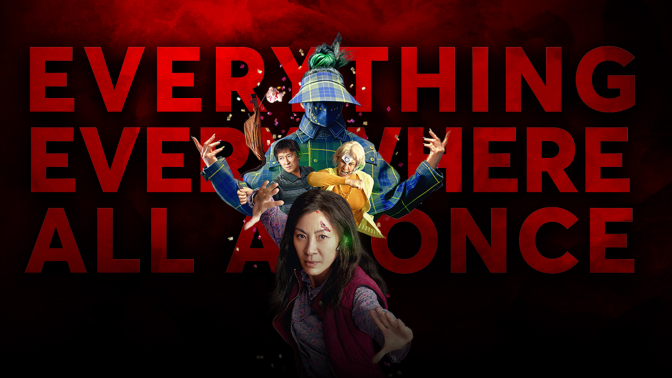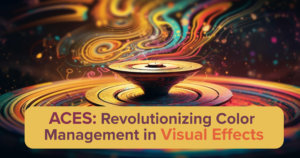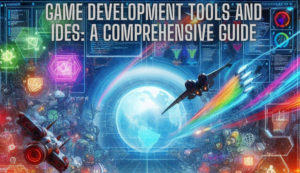A Visual Feast: Unravelling the Spectacular World of “Everything Everywhere All at Once”

In a world filled with blockbusters and high-budget spectacles, there occasionally emerges a cinematic gem that defies convention and captivates audiences with its creativity and resourcefulness. “Everything Everywhere All at Once” is one such cinematic marvel, challenging the boundaries of visual effects, storytelling, and imagination, all while working with a micro-budget of $25 million. In this review, we will delve deep into the mesmerizing journey of this film, exploring how it managed to craft a masterpiece with very few resources.
The journey of “Everything Everywhere All at Once” begins with the visionary director, Daniel Kwan, who, armed with a pocket camera that shoots in 4K, embarked on an ambitious adventure. He roamed the streets, capturing stock footage that would later become an integral part of this cinematic mosaic. These streets would serve as the canvas for a unique blend of visual storytelling and special effects, expertly interwoven with the exquisite performances of Michelle Yeoh. What’s truly remarkable is that this cinematic wonder was brought to life with minimal resources, proving that creativity and innovation often outweigh extravagant budgets. Despite its relatively modest budget, the film features a staggering number of nearly 500 visual effects shots, all masterfully crafted by a team of only five individuals. From wire removal to seamlessly blending visual effects with live action, the film’s visual effects work clarifies the art of doing more with less.
“Everything Everywhere All at Once” embraces practical effects with open arms, showcasing its commitment to authenticity. From an impressive jump between universes to the unaltered practical in-camera effects, the film maintains a sense of realism that is both captivating and wonderful. This dedication to practical effects provides a refreshing contrast to the heavily CGI-laden landscapes of modern cinema. The film takes the concept of practicality even further by introducing hand puppets, deliberately avoid using CGI entirely for certain characters, including a raccoon and hot dog hands. The decision to employ puppets for these characters adds a unique layer of charm and originality to the film, creating a delightful blend of fantasy and reality. The film’s audacious nature is exemplified in the “Trophy Fight” scene, where Michelle Yeoh’s character engages in a surreal battle with a hot dog. Yeoh’s willingness to embrace the absurdity of the scene, despite her remarkable career in serious cinema, is a testament to her dedication and the directorial vision that defined this movie. Quan, the film’s director, faced his own set of challenges while orchestrating the “Fanny Pack Fight.” The pressure was on, with limited shots and a tight budget, yet Quan’s determination led to a remarkably choreographed fight sequence that showcases his prowess as a director.
The film’s costume designer, Anissa Salazar, faced the daunting task of creating countless looks for Michelle Yeoh’s character, incorporating an array of wigs and hairpieces. Salazar’s attention to detail and commitment to consistency allowed Yeoh to seamlessly transition between her various personas, all while maintaining her character’s individuality. The film’s costumes, pieced together from various sources, including Los Angeles Chinatown and Amazon, reflect the character’s unique worlds and personalities. The palette of colors used to distinguish different universes adds depth to the storytelling and emphasizes the importance of costume design in world-building.
One of the most striking elements of the film is Jamie Lee Curtis’s refusal to wear any prosthetics for her role as the peculiar IRS inspector. This decision not only added authenticity to her character but also challenged the prevailing standards of Hollywood, where concealing imperfections often takes the drivers seat. The film underwent several changes before hitting theaters, and while some scenes were cut, there were compelling elements that could have added more depth to the narrative. Exploring the significance of these deleted scenes and their potential impact on the story’s context is an intriguing aspect of the film’s production. The timing of the film’s production, coinciding with the early days of the COVID-19 pandemic, is nothing short of a blessing in disguise. The fact that the crew completed principal filming just before the global shutdown is a testament to the film’s resilience and determination in the face of unforeseen challenges. The origins of “Everything Everywhere All at Once” trace back to a long drive, where the concept of a high-concept sci-fi narrative began to take shape. This simple yet profound moment of inspiration set the stage for the film’s intricate multiverse narrative. Unveiling the identities of those concealed beneath the gorilla masks, we discover that Daniel Kwan himself takes on the role of the hot dog ape, offering a unique perspective on the film’s creation. The level of dedication exhibited by the filmmakers, who also made cameos, further highlights their commitment to the project.
The enigmatic nature of the film’s characters keeps viewers engaged and curious about the dynamics of heroes and villains in the multiverse. The choice to name the film’s villain, Jobu Topaki, is a testament to the film’s penchant for unconventional storytelling. “Everything Everywhere All at Once” is a cinematic journey like no other, the keen budget constraints and exploring the limitless potential of storytelling and visual effects. It is a testament to the power of creativity, resourcefulness, and a dedicated team of individuals committed to bringing their vision to life. So, if you could visit any alternate universe, which one would you pick?
Similar Articles
-

Blockchain Gaming: Where Fun Meets Decentralization 04-12-2024
Introduction The gaming industry has always been a hotbed of innovatio
-

The Art of Product Design: Creating Timeless Toys 03-19-2024
Crafting Memories, One Toy at a Time: This is a journey of innovation
-

ACES: Revolutionizing Color Management in Visual Effects 02-19-2024
ACES, which stands for the Academy Color Encoding System, is a standar
-

Game Development Tools and IDEs: A Comprehensive Guide 02-15-2024
Game development is a complex and multifaceted process that requires a
